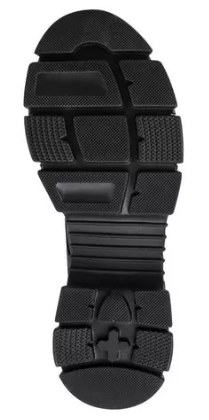Anti-slip soles: what are they and how to identify them?
Erick Noe Cortes PenaAnti-slip soles: all you have to know

In the world of footwear, safety and comfort are crucial aspects to ensure a satisfying walking experience. One of the most important features in this regard is the non-slip sole. In this article, we will delve into what non-slip soles are, how to identify them, how they work, and what the best type of non-slip footwear is available in the market.
What are non-slip soles?
Non-slip soles are a special feature in shoe and sneaker design that provide additional traction and prevent slips and falls. These soles are designed to offer enhanced grip on slippery surfaces such as wet floors, oily or greasy surfaces, and uneven terrains.
How to identify non-slip soles?
To identify non-slip soles, it is important to pay attention to certain key elements. Firstly, look for a grip pattern on the sole. These patterns are usually deep and strategically designed to increase friction while walking. Moreover, non-slip soles are often made of high-quality materials and incorporate special technologies such as high-traction rubber or specialized rubber compounds that enhance grip.
Additionally, some manufacturers highlight the presence of non-slip soles in the shoe description. Pay attention to labels or product specifications where you can find information about traction and slip resistance.

How do non-slip soles work?
Non-slip soles work by utilizing principles of friction and adhesion. These soles are designed to maximize traction and prevent slippage. The grip patterns on the sole increase the surface area in contact with the ground, creating additional friction and improving stability while walking.
Furthermore, the materials used in non-slip soles are formulated to offer superior grip. These materials are often wear-resistant and capable of maintaining good traction even in unfavorable conditions.
What is the best type of non-slip footwear?
The best type of non-slip footwear will depend on the environment in which it will be used. Some popular types include:
-
Non-slip work shoes: These shoes are specifically designed for professions that involve walking or standing for long periods on slippery surfaces. They usually feature sturdy and slip-resistant soles, offering great protection and comfort.
-
Non-slip athletic sneakers: Ideal for sports activities on slippery or wet surfaces. These sneakers are designed with technologies that maximize traction and stability, allowing for agile and secure movements.
-
Non-slip hiking boots: Perfect for outdoor enthusiasts who enjoy adventure. These boots are designed with robust soles and deep treads, ensuring excellent performance on slippery or uneven terrains.
-
Non-slip casual shoes: If you're looking for comfort and safety in your daily activities, non-slip casual shoes are an excellent choice. These shoes often have flexible and lightweight soles, but with grip patterns that prevent slips on slippery surfaces.
It's important to consider that each type of non-slip footwear has specific characteristics and is designed for different situations. Before purchasing, evaluate your needs and the environment in which you will use the footwear to choose the appropriate type.
Non-slip soles are an essential feature in modern footwear, providing safety and comfort when walking on slippery surfaces. Identifying non-slip soles involves observing the grip pattern and the materials used. These soles work by maximizing traction and preventing slippage through friction and adhesion.
The best type of non-slip footwear depends on the environment and activity for which it is needed. Non-slip work shoes, athletic sneakers, hiking boots, and casual shoes are popular options in the market.
By choosing the right non-slip footwear, you ensure a safer and more comfortable walking experience. Do not compromise on quality and pay attention to product specifications to obtain footwear that offers optimal grip and gives you.
Keep Reading
The All Court sole: What is it and what is it used for?

